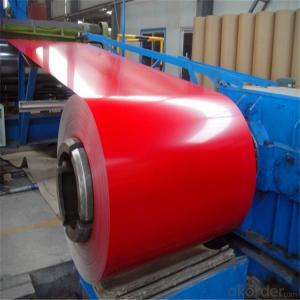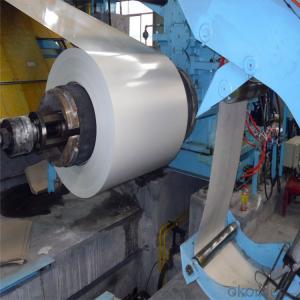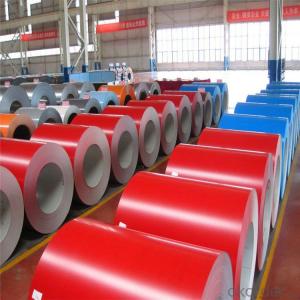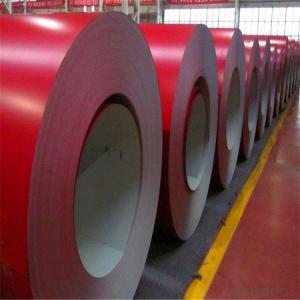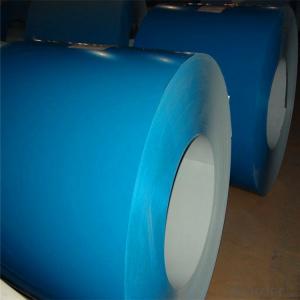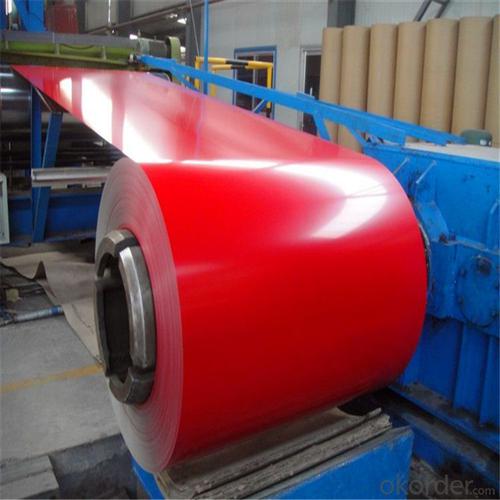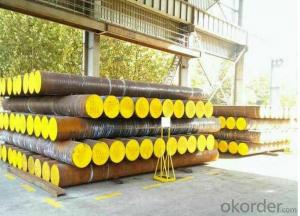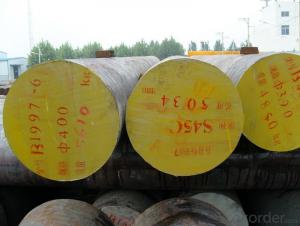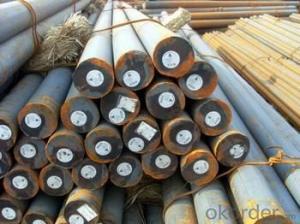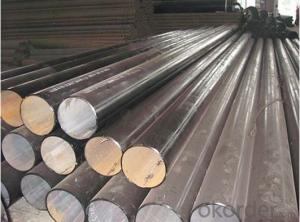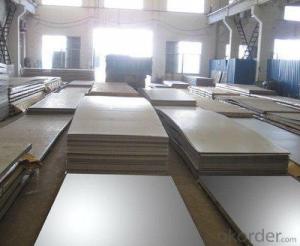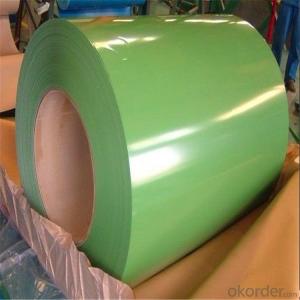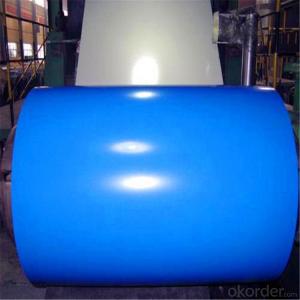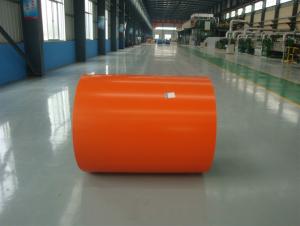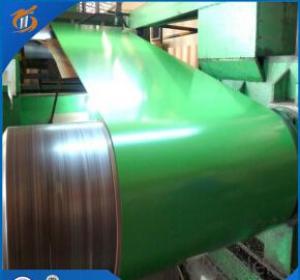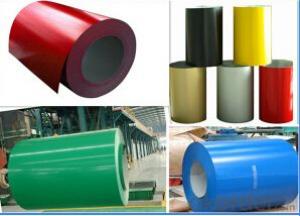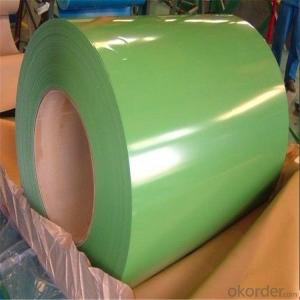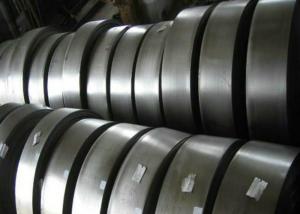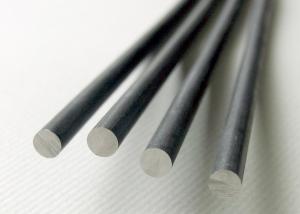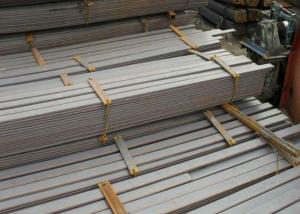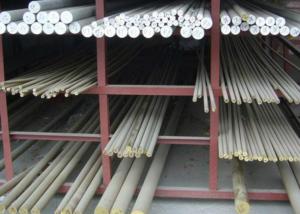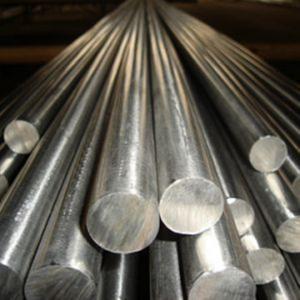Aluzinc PPGI Exterior Decorative Prepainted Galvanized Steel Coil
- Loading Port:
- Tianjin
- Payment Terms:
- TT OR LC
- Min Order Qty:
- 100 m.t.
- Supply Capability:
- 500000 m.t./month
OKorder Service Pledge
OKorder Financial Service
You Might Also Like
Specification
Aluzinc PPGI Exterior Decorative Prepainted Galvanized Steel Coil
Description of Aluzinc PPGI Exterior Decorative Prepainted Galvanized Steel Coil
Product | PPGI/PPGL |
Capacity | 5,000 tons/month |
Base material | Hot dipped galvanized steel |
Thickness | 0.2-2.0mm |
Width | 600-1250mm(according to your need) |
Coil Weight | 3-6tons |
Quality | SGCC, DX51D |
Color | RAL No. or customers samples’ color |
Zinc-coating | 30g/m2-180g/m2 |
Coil ID | 508mm/610mm |
Technique | Cold rolled—hot dipped galvanized—color coated |
Painting | Top painting:15~25μm |
Back painting: 6~10μm | |
Tolerance | Thickness: +/-0.02mm |
Width:+/-2mm | |
Shipment time | within 15-45 workdays |
Payment | T/T, L/C at sight |
Packing | Standard export packing |
The special order can be negotiated. | |
Application of Aluzinc PPGI Exterior Decorative Prepainted Galvanized Steel Coil
APPLICATION OF OUR PREPAINTED STEEL | ||||||||||
Construction | Outside | Workshop,agricultural warehouse,residential precast unit | ||||||||
corrugated roof,roller shutter door,rainwater drainage pipe,retailer booth | ||||||||||
Inside | Door,doorcase,light steel roof stucture,folding screen,elevator,stairway,ven gutter,Construction Wall | |||||||||
Electrical applicance | Refrigerator,washer,switch cabnet,instrument cabinet,air conditioning,micro-wave owen,bread maker | |||||||||
Fuiniture | Central heating slice,lampshade,chifforobe,desk,bed,locker,bookself | |||||||||
Carrying trade | Exterior decoration of auto and train,clapboard,container,isolation lairage,isolation board | |||||||||
Qthers | Writing panel,garbagecan,billboard,timekeeper,typewriter,instrument panel,weight sensor,photographic equipment | |||||||||
Products Show of Aluzinc PPGI Exterior Decorative Prepainted Galvanized Steel Coil
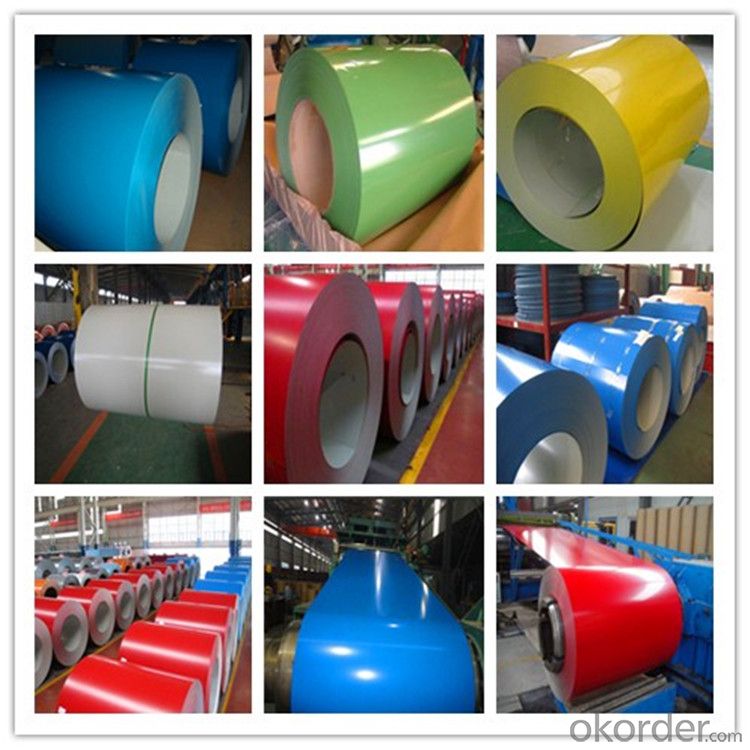
Product Advantages
1.With nearly 20 years experience in prepainted steel, accommodate different marketdemands. | ||||||||||||||
2.'Quality first, service first' is our business aim; 'The good faith get respect,cast quality market' is our Business philosophy . | ||||||||||||||
3.Having two series producttion line,with the abbual production capacity of 240000 tons. | ||||||||||||||
4.Exceed International ISO9001:2008&ISO14001:2004 quality and environmental standards | ||||||||||||||
5.Meet with ROHS standard |
Company Information
CNBM International Corporation is the most important trading platform of CNBM group.
Whith its advantages, CNBM International are mainly concentrate on Cement, Glass, Iron and Steel, Ceramics industries and devotes herself for supplying high qulity series of refractories as well as technical consultancies and logistics solutions.

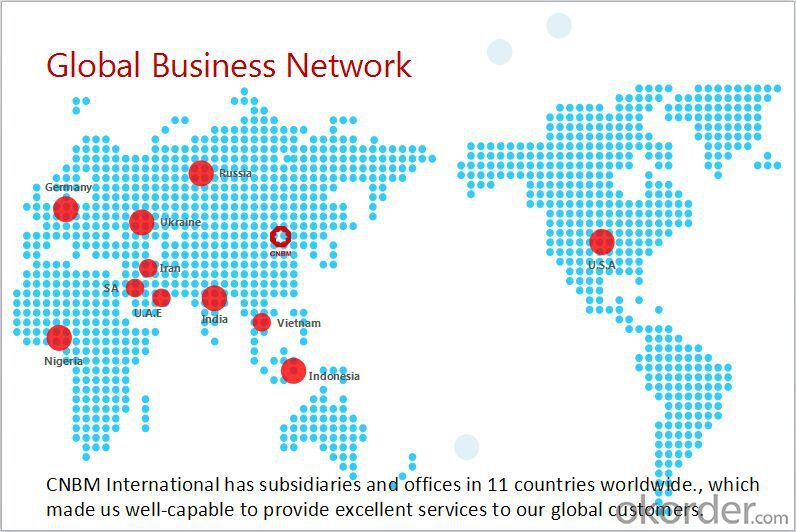
F A Q
1, Your advantages?
professional products inquiry, products knowledge train (for agents), smooth goods delivery, excellent customer solution proposale
2, Test & Certificate?
SGS test is available, customer inspection before shipping is welcome, third party inspection is no problem
3, Factory or Trading Company?
CNBM is a trading company but we have so many protocol factories and CNBM works as a trading department of these factories. Also CNBM is the holding company of many factories.
4, Payment Terms?
30% TT as deposit and 70% before delivery.
Irrevocable L/C at sight.
5, Trading Terms?
EXW, FOB, CIF, FFR, CNF
6, After-sale Service?
CNBM provides the services and support you need for every step of our cooperation. We're the business partner you can trust.
For any problem, please kindly contact us at any your convenient time.
We'll reply you in our first priority within 24 hours.
- Q: What is the importance of heat treatment in special steel?
- Heat treatment is crucial in the production of special steel as it significantly impacts its mechanical properties and performance. By subjecting the steel to controlled heating and cooling processes, heat treatment can enhance its hardness, strength, toughness, and resistance to wear and corrosion. Additionally, heat treatment helps to refine the microstructure of the steel, improving its grain size and distribution, which further enhances its mechanical and metallurgical properties. Overall, heat treatment plays a vital role in optimizing the performance and durability of special steel, making it suitable for various applications in industries such as automotive, aerospace, and construction.
- Q: How does special steel contribute to the telecommunications industry?
- The telecommunications industry relies heavily on special steel, which plays a vital role by offering the necessary strength, durability, and resistance to various environmental factors. Special steel finds its primary use in the manufacturing of transmission towers, antenna systems, and other supporting structures in telecommunications. For instance, transmission towers serve as the backbone of the telecommunications network, requiring the ability to withstand extreme weather conditions like strong winds, heavy precipitation, and even earthquakes. Special steel ensures the stability and functionality of these towers under such challenging circumstances due to its high tensile strength and resistance to corrosion. Furthermore, antenna systems also benefit from the use of special steel. Whether it's for satellite communication or wireless networks, antennas require materials with excellent electrical conductivity and low signal loss. Special steel alloys meet these requirements, enabling efficient signal transmission and reception. Moreover, special steel offers the advantage of being lightweight while maintaining its strength, making it ideal for constructing structures that need to be installed at significant heights, such as telecommunication towers. By utilizing special steel, telecommunications companies can achieve cost savings in both construction and transportation. Additionally, the durability and resistance to corrosion of special steel make it ideal for long-term use in the telecommunications industry. These properties contribute to the extended lifespan of structures and equipment made from special steel, reducing maintenance and replacement costs. The longevity of special steel also enhances the overall reliability and stability of the telecommunications network. In summary, special steel's unique properties, including its strength, durability, resistance to environmental factors, and efficient signal transmission capabilities, make it an essential material in the telecommunications industry. By providing support and reliability, special steel significantly contributes to the seamless operation of communication networks, enabling efficient and reliable connectivity for individuals and businesses worldwide.
- Q: What are the main characteristics of electrical steel?
- Electrical steel, also known as silicon steel or transformer steel, offers several key features that make it suitable for use in electrical appliances and power equipment. Firstly, it possesses a high magnetic permeability, enabling efficient magnetic flux conduction and reducing energy losses in transformers, motors, and generators. Secondly, electrical steel demonstrates low core loss, encompassing hysteresis loss and eddy current loss. Hysteresis loss refers to the dissipation of energy caused by the reversal of magnetic domains within the material, while eddy current loss arises from circulating currents induced by alternating magnetic fields. The low core loss property of electrical steel ensures high energy efficiency and minimizes heat generation in electrical devices. Another significant characteristic of electrical steel is its high electrical resistivity, which diminishes the magnitude of eddy currents and further reduces energy losses in electrical equipment. Additionally, it possesses a high saturation induction, denoting its ability to reach maximum magnetic flux density. This characteristic enables transformers and motors to function at higher magnetic flux densities, resulting in more compact and efficient designs. Moreover, electrical steel exhibits high mechanical strength, essential for withstanding the stresses and vibrations encountered in electrical devices. It also demonstrates good thermal conductivity, facilitating efficient heat dissipation and enhancing the overall performance and longevity of electrical equipment. In conclusion, electrical steel boasts high magnetic permeability, low core loss, high electrical resistivity, high saturation induction, high mechanical strength, and good thermal conductivity. These properties make it an ideal material for various electrical applications, offering efficiency, reliability, and performance in power generation, transmission, and utilization.
- Q: How does special steel perform in medical applications?
- Special steel, also known as stainless steel, has proven to be a highly versatile and reliable material for various medical applications. Its unique properties make it an ideal choice for medical instruments, devices, and equipment. First and foremost, special steel is highly resistant to corrosion, which is crucial in medical settings where sterilization and frequent exposure to moisture are common. This resistance to corrosion ensures that the steel remains durable and does not degrade over time, making it suitable for long-term use. Additionally, special steel is biocompatible, meaning it does not cause any adverse reactions when in contact with living tissues or bodily fluids. This biocompatibility is essential for medical implants such as prosthetics, orthopedic screws, and dental implants, as it minimizes the risk of rejection or infection. Moreover, special steel offers excellent strength and hardness, allowing it to withstand the demanding conditions of medical procedures. It can maintain its structural integrity even under extreme temperatures or high-pressure environments, making it suitable for surgical instruments and cutting tools. Its hardness also enables sharp and precise cutting edges, ensuring accurate and effective surgical procedures. Furthermore, special steel is easy to clean and sterilize due to its smooth surface finish. This is crucial in medical applications where maintaining a sterile environment is of utmost importance to prevent the spread of infections. The smooth surface also prevents the accumulation of bacteria or other contaminants, reducing the risk of contamination. In conclusion, special steel has proven to be a highly reliable and versatile material for medical applications. Its corrosion resistance, biocompatibility, strength, and ease of sterilization make it ideal for medical instruments, devices, and implants. The exceptional performance of special steel in medical applications contributes to improving patient care, ensuring safety, and enhancing the overall effectiveness of medical procedures.
- Q: How is wear-resistant tool steel used in the production of cutting tools?
- Wear-resistant tool steel is commonly used in the production of cutting tools due to its high hardness and resistance to wear. This steel is able to withstand the abrasive forces and high temperatures generated during cutting operations, resulting in longer tool life and improved cutting performance. The wear-resistant tool steel is typically used to manufacture various cutting tools such as drills, milling cutters, saw blades, and lathe tools, ensuring durability and efficiency in metalworking and machining processes.
- Q: How does special steel contribute to reducing product maintenance requirements?
- Special steel contributes to reducing product maintenance requirements by offering superior strength, durability, and resistance to corrosion and wear. This means that products made with special steel are less likely to break, degrade, or require frequent repairs or replacements. Its high-quality properties enable longer product lifespans and enhanced performance, ultimately minimizing maintenance efforts and costs for users.
- Q: How does special steel contribute to improving product performance in corrosive environments?
- Special steel contributes to improving product performance in corrosive environments due to its unique properties and composition. Special steel is specifically designed to resist corrosion and maintain its structural integrity even when exposed to harsh conditions. It contains elements like chromium, nickel, and molybdenum that form a protective layer on the surface, preventing the metal from reacting with corrosive substances. This enhanced corrosion resistance ensures that products made from special steel have a longer lifespan, reduced maintenance requirements, and improved performance in corrosive environments.
- Q: Can special steel be used in the aerospace parts manufacturing industry?
- Yes, special steel can be used in the aerospace parts manufacturing industry. Special steel alloys, such as stainless steel or high-strength alloys like titanium, are commonly utilized in the aerospace industry due to their excellent strength, durability, corrosion resistance, and heat resistance properties. These materials are vital for manufacturing critical components like aircraft engines, landing gears, and structural parts, ensuring safety and performance in demanding aerospace applications.
- Q: How does special steel perform in high-temperature oxidation with sulfur-containing atmospheres?
- Special steel, due to its unique composition and properties, exhibits excellent performance in high-temperature oxidation with sulfur-containing atmospheres. Its high resistance to corrosion and oxidation ensures that it can withstand the harsh conditions and maintain its structural integrity even at elevated temperatures. Additionally, special steel's ability to form a protective oxide layer helps to prevent sulfur-related damage and maintain its mechanical properties over time.
- Q: What is the purpose of cold drawing in special steel production?
- Cold drawing is utilized in special steel production with the aim of enhancing the mechanical properties and dimensional accuracy of the steel. This technique involves pulling the steel through a die at room temperature, which leads to a reduction in the cross-sectional area and an increase in the length of the steel. By undergoing this process, the microstructure of the steel is refined, resulting in improved strength, hardness, and toughness. Furthermore, cold drawing has the ability to improve the surface finish and straightness of the steel, ensuring precise dimensions and making it suitable for a wide range of applications that require high-quality steel. In summary, cold drawing plays a vital role in improving the performance and quality of special steel, making it more dependable and efficient in various industrial sectors.
Send your message to us
Aluzinc PPGI Exterior Decorative Prepainted Galvanized Steel Coil
- Loading Port:
- Tianjin
- Payment Terms:
- TT OR LC
- Min Order Qty:
- 100 m.t.
- Supply Capability:
- 500000 m.t./month
OKorder Service Pledge
OKorder Financial Service
Similar products
Hot products
Hot Searches
Related keywords
